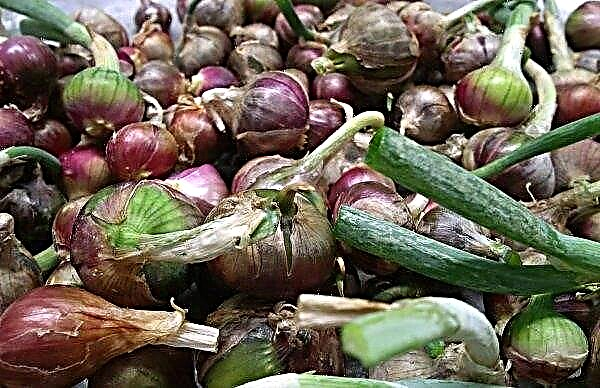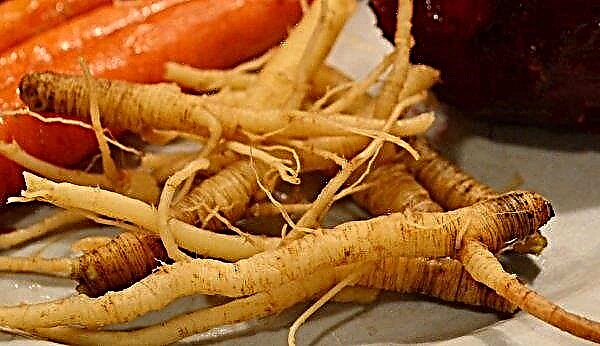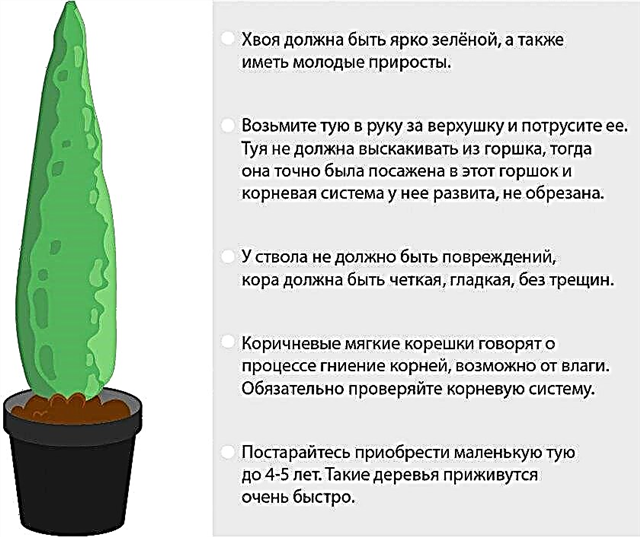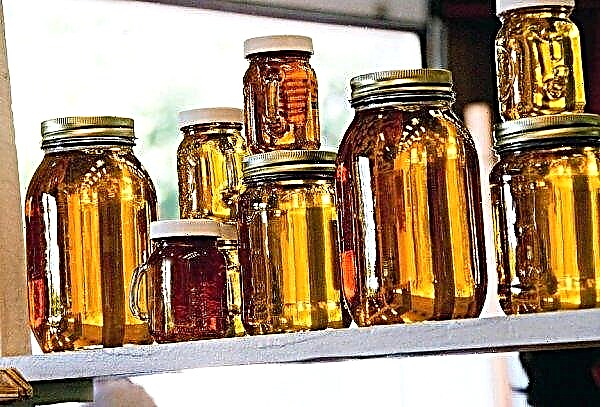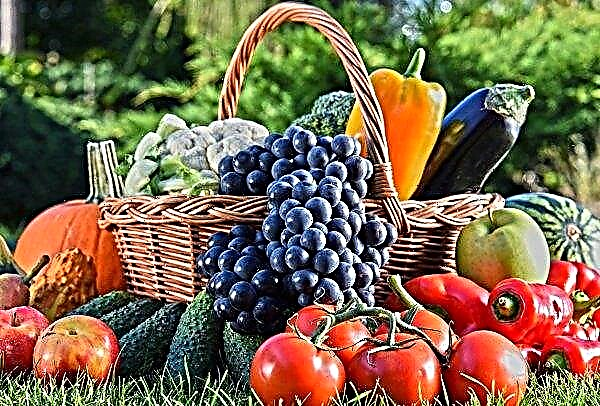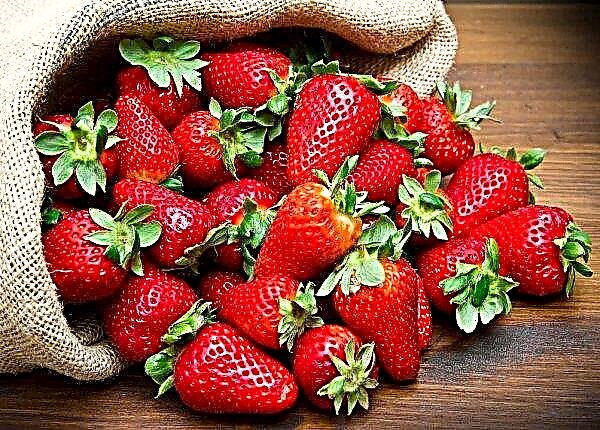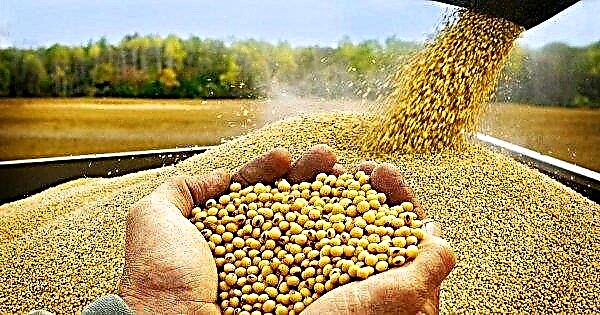With the advent of February, the time begins for sowing and growing many plants in heated greenhouses and in pots on home windowsills. In this article, we will consider what can be sown in February for subsequent planting in a garden or garden, and how best to plan garden work, based on the influence of the moon's gravity on plants.
What is the main job a gardener needs to do in February
Depending on how cold the winter was, and what temperature prevails at that time, the February garden is already slowly waking up from hibernation.
February works:
- It is necessary to inspect the greenhouse on the site. If there is enough snow in the garden, try to bring it in and scatter it over the greenhouse beds. Simultaneously with the warming of the air, the snow in the greenhouse will melt and absorb into the soil, this will be a good moisture-charging watering of the beds before the start of spring sowing. Since this is one of the snowiest winter months, there can also be a lot of snow on the roof of the greenhouse.
 The greenhouse roof needs to be periodically cleaned of this snow cap, because the February fluctuations in air temperature lead to the fact that during the thaw the snow becomes heavy and can push through (break down) the roof of the greenhouse. The roof of any greenhouse (made of polycarbonate or polyethylene) is cleaned with a soft broom. For these purposes, do not use hard objects, as they can damage the transparent coating.
The greenhouse roof needs to be periodically cleaned of this snow cap, because the February fluctuations in air temperature lead to the fact that during the thaw the snow becomes heavy and can push through (break down) the roof of the greenhouse. The roof of any greenhouse (made of polycarbonate or polyethylene) is cleaned with a soft broom. For these purposes, do not use hard objects, as they can damage the transparent coating. - To return more light and air to plants, pruning of trees and shrubs is necessary, in which too overgrown specimens are shortened and take shape. All wilted, broken and diseased branches are removed. Thick branches of old trees are to be felled.
 Damage to the bark and cuts are lubricated with garden var. At the same time, hedges are trimmed and pruned by forsythia bushes, buddley, hydrangea, evergreen shrubs, ornamental currants and felt cherries.
Damage to the bark and cuts are lubricated with garden var. At the same time, hedges are trimmed and pruned by forsythia bushes, buddley, hydrangea, evergreen shrubs, ornamental currants and felt cherries. - In February, you can fertilize perennial shrubs, such as rose bushes, with complex fertilizers scattered in the snow in the root zone. Snow is laid on top of fertilizers in the root zone of plants, and the higher the snowy hill, the better. For evergreens, such as spruce, fir, dwarf pine, it is recommended to carry out a one-time feeding of magnesium. For perennials, small trees, as well as for roses that are still in winter shelters, you should check the protection for the integrity of insulation. It’s too early to take cover, because there can be severe frosts.
Important! February thaws are suitable for harvesting cuttings for vaccination, so at the end of the month in good weather you can start cutting branches of fruit trees.
Seeds of flowers and vegetables are also sown:
- Seeds are sown in boxes or pots with compost soil, which is previously kept in the house for several days so that it can warm up. In the store you can buy special soil for sowing seeds, ideal for growing seedlings at home.

- Seeds sown in furrows are covered with soil, watered, and boxes with crops are covered with transparent foil or glass to limit the evaporation of moisture. The containers are placed on the most lighted window sill, preferably on the south window. In the room, it is desirable to maintain a temperature of about + 21 ° C during the entire growing season of plants. The earth in the root zone of growing plants is moistened with a spray bottle at room temperature.

Favorable and unfavorable planting days in February 2019 for seeds of vegetables and flowers
Since some constellations contribute to the rapid vegetation of the flora, while others slow it down, when choosing a day for sowing, you should focus on favorable and unfavorable days for such work.
The moon daily changes the distance and position relative to the Earth, at the same time there is a movement of constellations, and all these factors affect the germination of the seed and its further growth.
Experienced gardeners, choosing the time for sowing, focus on the sowing calendar, which is compiled separately for each month of the year. For example, lunar calendars for 2018 and 2019 are significantly different from each other.
Did you know? If tomatoes growing on acidic soils are regularly watered with soda water throughout the growing season, the taste of the fruit will be much sweeter, since this food product deoxidizes the soil perfectly.
Auspicious days
February is the best time to start growing seedlings. This means that gardeners sow seeds and grow young plants, and then plant seedlings in heated or unheated greenhouses, and when steady heat occurs, plants are planted in street soil.
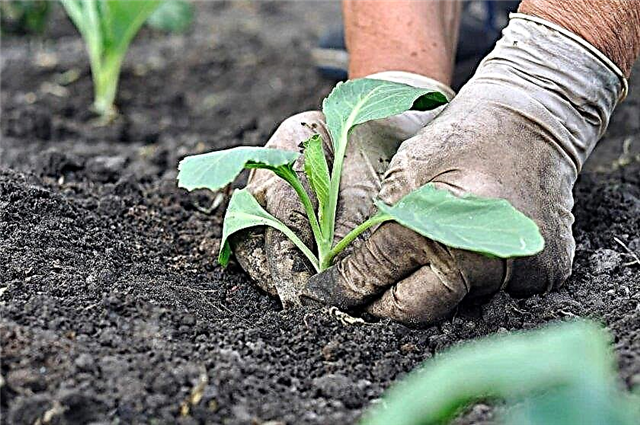
In February, the seeds of such crops are sown:
- early cabbage (white and red, Chinese, broccoli, Beijing, colored);
- eggplant, pepper, flowers;
- onions, leeks;
- fennel, kohlrabi, parsley, lettuce;
- Tomatoes
- petiole and root celery;
- early varieties of spinach, carrots, red beets and radishes.
The best time to plant plants is on the days from February 14 to February 25, when the first and third quarters of the moon begin. Of these 12 days, two will be the most favorable: February 20 and 21. These are the first days after the full moon, which will come on February 20, 2019. At this time, the natural satellite of the Earth will be in the sign of Virgo.
Important! Celery seeds germinate in the dark, so after sowing the seedling box is covered with an opaque lid and left in this position until the seeds germinate. The time from sowing to germination of celery seeds can be from 3 to 4 weeks.
Plants such as arugula, basil, eggplant, salad are good to sow in the second half of the month. For their sowing, it is best to choose February 16, when the Moon will be in the constellation Cancer. For beets, carrots, radishes, parsley or root celery, the most favorable will be February 21 (the Moon in the III quarter in the sign of Capricorn).
Sowing all kinds of cabbage is best done on the growing moon. Tomato cultivation should begin on February 11, when the crescent is in the sign of Aries, or before the full moon in the sign of Cancer and Leo - February 18.
The lunar calendar shows gardeners that the 3 days of February will be most suitable for planting flowers. Gardeners will receive a period of good time to start growing seedlings of ornamental plants from February 23 to 25.
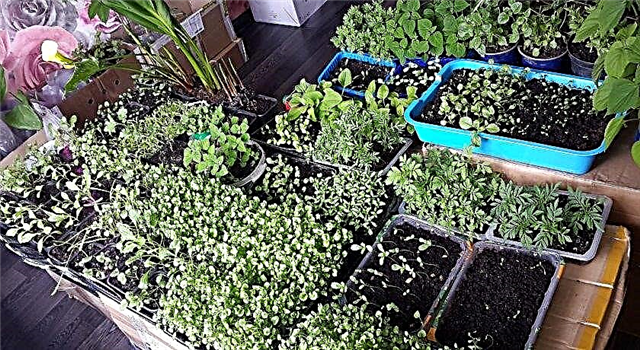
Examples of sowing flowers in February:
- garden cornflowers;
- lobelia;
- varietal and hybrid petunia;
- seed dahlias;
- Mexican Mariana
- Peruvian heliotrope;
- garden verbena.
These days are also a very favorable time for planting herbs such as ordinary basil, Asian basil, medicinal sage, rosemary and tarragon.
Bad days
The main unfavorable days for sowing and planting flora fall on the waning moon. In February, this period falls from the first to the fourth day of the month.
It is undesirable for the plant growing period to begin with a new moon, in February it will be the fifth day of the month, and the full moon on February 20.

In February 2019, it is also not recommended to sow and transplant plants on such dates: 6, 7, 10, 13, 14, 19.
The lunar calendar of the gardener and gardener for February 2019 by day
Such a sowing schedule is a very useful tool, because it allows you to determine which days are best suited for sowing certain plants, and on which days it is better to abandon some types of garden work, because they can negatively affect the development of seeds.
The schedule of the lunar calendar is based on the principles of biodynamics - a science that recognizes the influence of the moon in its certain phases on the development of plants. This natural satellite of the Earth is the second most important factor affecting the growth of flora, after weather conditions.
Did you know? If you pick a spoonful of soil from the beds, there will be so many microorganisms that their number will exceed the number of all people on our planet.
Thanks to many years of research, it was possible to prove that, depending on the phase of the moon, some groups of plants develop better. In addition, the moon moves between the signs of the zodiac.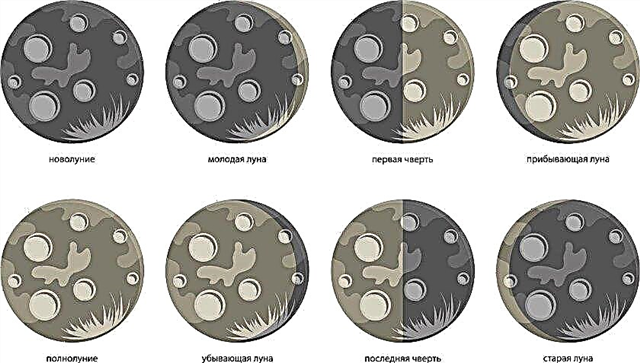 The journey from one sign to another, although not always along the same route, takes 52 hours. In February 2019, the time of the Moon without a course comes on the 5th at 0:04, and it will be in the constellation Aquarius. The full moon will come on 02.20.19 at 18:53 Moscow time.
The journey from one sign to another, although not always along the same route, takes 52 hours. In February 2019, the time of the Moon without a course comes on the 5th at 0:04, and it will be in the constellation Aquarius. The full moon will come on 02.20.19 at 18:53 Moscow time.
In the sign
Old moon
(Eighth phase)
26 / 27lunar day
Bad day
It is undesirable to carry out work related to soil and irrigation.
In the sign
Old moon
(Eighth phase)
27/28 lunar day
Neutral day
A day suitable for loosening the soil in planting tanks and digging beds in the greenhouse.
In the sign
Old moon
(Eighth phase)
28 / 29lunar day
Bad day
It is undesirable to carry out any actions (transplanting, pruning, watering) with indoor flowers
In the sign Aquarius
Old moon
(Eighth phase)
29/30 lunar day
Bad day
Unsuitable day for sowing.
You can inspect greenhouses, garden tools, containers for growing plants
In the sign Aquarius
30/1/2 lunar day
Neutral day
An unsuitable day for sowing, but suitable for making planting plans for the garden, vegetable garden and flower beds.
In the signFish
Young moon
(Second phase)
2/3 moon day
Neutral day
Unsuitable day for sowing.
You can do revision of seeds and planting tubers.
In the signFish
Young moon
(Second phase)
3/4 moon day
Auspicious day
Time suitable for treating seeds in growth stimulants, soaking them for germination, preparing seedling containers.
In the signFish
Young moon
(Second phase)
4/5 moon day
Neutral day
You can pick out grown plants or carry out foliar feeding of growing seedlings.
In sign
Young moon
(Second phase)
5/6 moon day
Neutral day
It is not recommended to water the seedlings.
In sign
Young moon
(Second phase)
6/7 moon day
Neutral day
Suitable for snow retention on beds, it is also advisable to brush off the snow cap from trees and bushes.
In the sign Taurus
Young moon
(Second phase)
7/8 moon day
Auspicious day
A time favorable for sowing various root crops in the heated greenhouse.
In the sign Taurus
Young moon
(Second phase)
8/9 moon day
Auspicious day
Sow the seeds of perennial plants in pots, carry out watering.
In the sign Taurus
First quarter
(Third phase)
9/10 moon day
Neutral day
Spray fruit trees on bare branches, are engaged in winter garden vaccinations.
In the sign
The coming moon
(Fourth phase)
10/11 lunar day
Neutral day
Do not plant or sow.
Loosen the soil in the aisles of seedlings.
In the sign
The coming moon
(Fourth phase)
11/12 moon day
Bad day
Not suitable for sowing.
You can plan and prepare seeds.
In signCancer
The coming moon
(Fourth phase)
12/13 moon day
Auspicious day
Sow onion in a heated greenhouse to obtain a feather, parsley, dill, salad.
In signCancer
The coming moon
(Fourth phase)
13/14 lunar day
Neutral day
Suitable for preplant seed treatment.
In the sign
The coming moon
(Fourth phase)
14/15 lunar day
Auspicious day
Solanaceous crops are sown (tomatoes, eggplant, bitter and sweet peppers) and zucchini.
In the sign
15/16 moon day
Bad day
It is undesirable to carry out any work with soil and plants.
In signVirgo
Waning moon
(Sixth phase)
16 / 17lunar day
Bad day
Do not sow, do not transplant, do not water and do not fertilize.
In signVirgo
Waning moon
(Sixth phase)
17 / 18lunar day
Auspicious day
Sowing carrots and beets in heated greenhouses.
In sign Libra
Waning moon
(Sixth phase)
18/19 lunar day
Neutral day
Conducting root dressing for indoor flowers and seedlings.
In sign Libra
Waning moon
(Sixth phase)
19/20 lunar day
Neutral day
Sow flower seeds for seedlings in containers.
In sign
Waning moon
(Sixth phase)
20 lunar day
Auspicious day
In heated greenhouses sow seeds of flowers for seedlings.
In sign
Waning moon
(Sixth phase)
20 / 21lunar day
Auspicious day
Bitter pepper, radish, spicy herbs are sown in closed ground, small bulbs are planted to produce a green feather.
In sign Sagittarius
Last quarter
(Seventh phase)
21 / 22lunar day
Neutral day
A day for carrying out work on plant nutrition, as well as for sowing tomatoes and zucchini for seedlings.
In sign Sagittarius
Old moon
(Eighth phase)
22 / 23lunar day
Neutral day
Bad day for sowing.
Suitable for fighting in the garden with wintering harmful insects
In the sign
Old moon
(Eighth phase)
23 / 24lunar day
Neutral day
Chemical treatment of the garden and seedlings with insect and disease preparations.
Lunar sowing calendar of the gardener for the spring season:
Popular signs for February
Sudden changes in temperature are characteristic of the last month of winter. Popular rumor endowed February with the name "fierce" and the nickname "bogogrey". In February, the weather is unstable and can fluctuate during the day from a thaw with a spring drop to severe frost.

The first day of February in Orthodoxy is considered the day of St. Macarius, the people added to his name the name Weather Weather. The people believed that the weather conditions that fell on this day indicate the entire February weather.
For example, if the day is sunny and cloudless, this portends an early spring warmth. The thaw, accompanied by melting snow, is also a sign of imminent spring, and wind and snow on this day promises snowy February, rich in snowstorms. If the blizzard goes off by noon, most likely the snow will not melt for a long time.
Did you know? Sunflower is a habitual inhabitant of gardens and flower beds, from afar noticeable in large flowers and bright flowering. Oddly enough, the sunflower hat is not a single flower, it is an inflorescence consisting of about 2 thousand small flowers.
February is the last winter month, which means that the arrival of spring is already close, so gardeners and gardeners need to prepare for the next warm season. It is time to sow the seeds of various crops to obtain seedlings, and in order to choose a good time for sowing, the gardener should consult the lunar calendar.

 The greenhouse roof needs to be periodically cleaned of this snow cap, because the February fluctuations in air temperature lead to the fact that during the thaw the snow becomes heavy and can push through (break down) the roof of the greenhouse. The roof of any greenhouse (made of polycarbonate or polyethylene) is cleaned with a soft broom. For these purposes, do not use hard objects, as they can damage the transparent coating.
The greenhouse roof needs to be periodically cleaned of this snow cap, because the February fluctuations in air temperature lead to the fact that during the thaw the snow becomes heavy and can push through (break down) the roof of the greenhouse. The roof of any greenhouse (made of polycarbonate or polyethylene) is cleaned with a soft broom. For these purposes, do not use hard objects, as they can damage the transparent coating. Damage to the bark and cuts are lubricated with garden var. At the same time, hedges are trimmed and pruned by forsythia bushes, buddley, hydrangea, evergreen shrubs, ornamental currants and felt cherries.
Damage to the bark and cuts are lubricated with garden var. At the same time, hedges are trimmed and pruned by forsythia bushes, buddley, hydrangea, evergreen shrubs, ornamental currants and felt cherries.





